Fun and scary facts about deer
» Deer stories » Deer facts » Fun and scary facts about deerToday we've prepared for you some fun, weird and even scary facts about deer species.
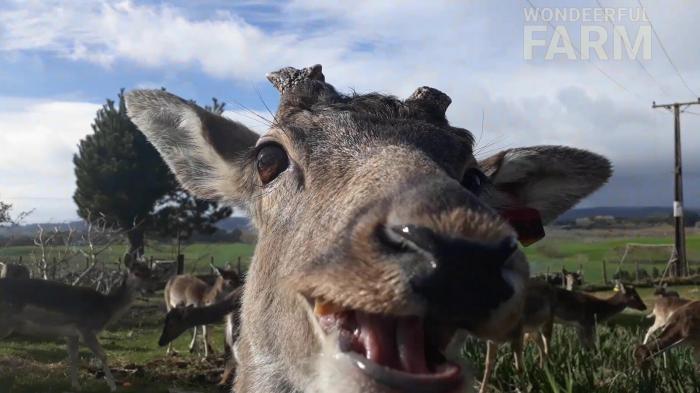
Amazing fawn facts
-
Did you know little baby deer (fawns) take their first steps within half an hour of their birth? It's true! And within 7 hours they can begin walking around. But they do spend a lot of time sitting down or snoozing. Mothers leave them alone for hours, so if you happen to stumble upon one or a few in the woods don't assume they've been abandoned. Do not pick them up and attempt to 'save' them. You can come back in a few hours and discover that the fawn has been 'picked up' by his mom.
Deer antlers are the fastest growing tissue on Earth!
-
They can grow at a rate of ¼ inch (0.6 cm) per day! Moose (elk), being the largest species in deer family, grow largest antlers. Female Caribou (Reindeer) are the only female deer which grow antlers.
Each year, antlers fall off and then regrow. Antlers are covered in a furry coat called velvet, which helps them regrow quickly. Deer velvet therefore have been widely used as a health supplement, especially in China, for about 2000 years.
Impressive deer physical abilities facts
- Deer can run up to 30 miles (48km) per hour when they are scared. They can also jump up to 10ft (3 m) high.
- They can swim at up to 13 miles (20 km) per hour and cross large bodies of water. Deer's coat has hollow hair that provides buoyancy and hind legs are especially strong, all of which helps.
Deer vision facts
- Having eyes on the side of their head, deer posess 310 degrees’ vision. (Humans have 180).
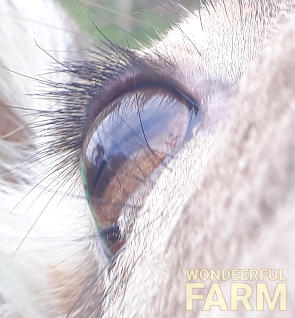
If you look closely at our deer's eye, it has this wide pupil. Which probably explains the wider angle. Truly remarkable! We have fallow (Dama dama) deer, can't speak for other species.
Night vision - no problem there. One issue is - deer are red-green color blind. They see reds and oranges as shades of green. 50 shades of green, eh?
Creepy deer fact
- Chinese water deer do not have antlers, they're descendants from Dracula but grow fang-like tusks instead. Observe:
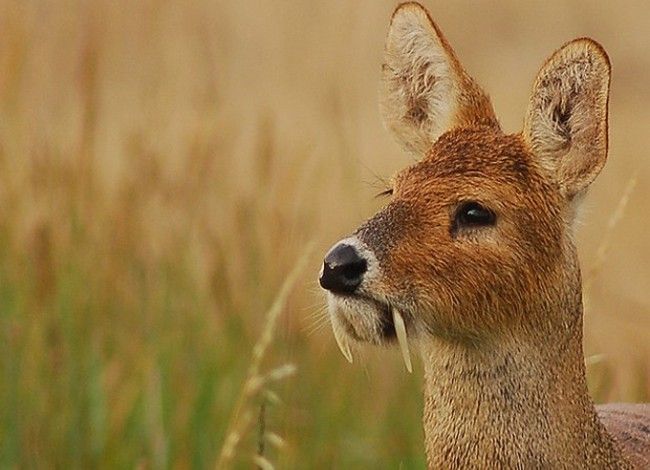
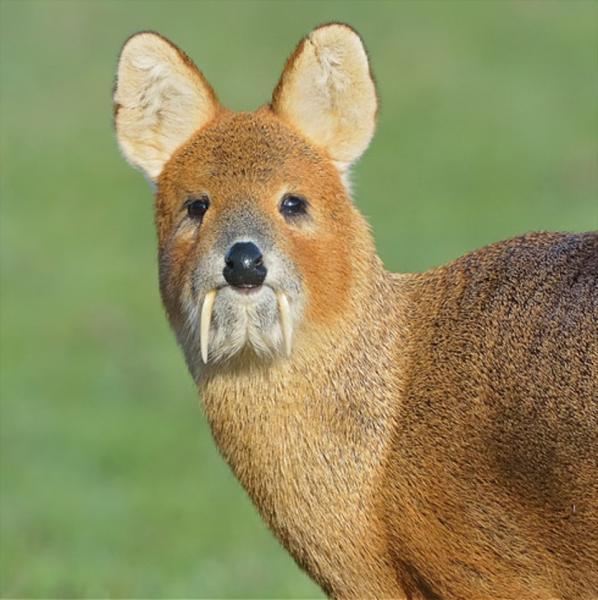
The two images above are not ours and we make no copyright claim on them.
Our deer, the fallow kind, they actually only have bottom front teeth. No top row in the front! In the back they do have both rows, that's how they crunch carrots and chew all they need to chew. We cover this and provide HD pictures in the post called "Inside a deer's mouth".
Scary deer fact
-
In case you're not spooked enough by the 'Dracula deer', here's another scary fact: Deer Spotted Eating Human Bones. "Deer may pursue flesh because they lack minerals like phosphorous, salt, and calcium, especially in the winter months when plant life is scarce." So in other words, just like humans, when they get really hungry, can go as far as eating spinach, deer can start munching on whatever flesh and bones they can find. Mind you, deer chew a lot of stuff, not necessarily swallowing it, on our farm, you'll sometimes see them chewing on plastic. One of our camera holders has gotten pretty chewed up. So not necessarily do deer even eat human bones as the story concludes.
BTW, Elafiphobia is the fear of deer. :)
How do you ever fear these animals? You must see them as something like this:
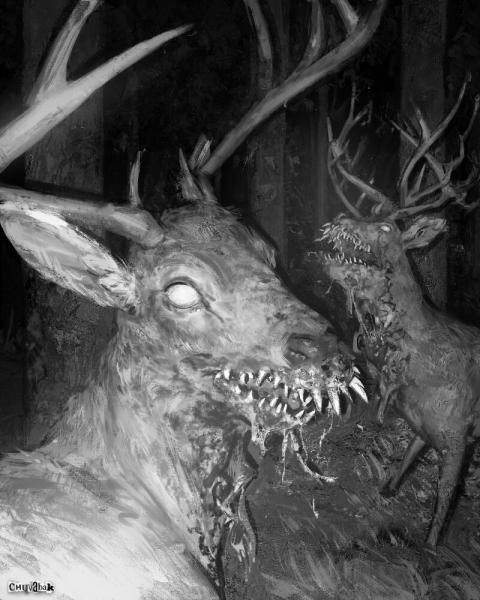
Image credit: Oleg Vdovenko
- Do deer bite? Yep. Deer can and do bite. Each other, quite regularly, and people, rarely. For example, there are several reports of deer biting in Japan's Nara park. Even other kinds of attacks. They usually happen when animals feel they're being teased and the food is being withheld from them. Don't tease them. Actually, don't approach them unless you know what you're doing.
Amazingly cute deer fact
- Back to cute stuff. Pudu deer are the world's smallest deer species. Adults grow only up to 14 inches (35 cm) tall and weight as much as 20 pounds (9 kg).
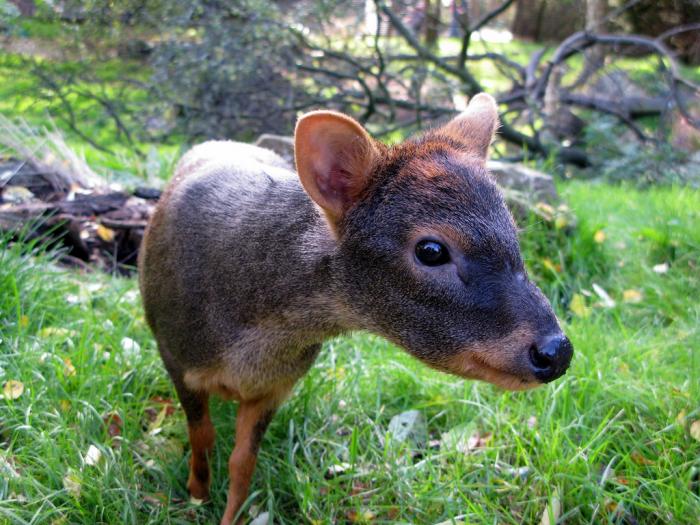
Image credit: Robert Lowe, licence
However, recently, a 'mouse-deer' was rediscovered. It's even tinier, but not a true deer. A deer-like creature.
Deer ancestors facts
- Fallow deer (the type we have on Wondeerful Farm) are thought to be the only descendants of Megaloceros, which was a deer that lived over two million years ago during the Ice Age.
Deers' rare canine teeth were used as jewellery
Upper canine teeth in deer are uncommon and even could be considered on the borderline of rare. They are known as ivories, whistlers, buglers, eye teeth, dog teeth or pearl teeth. Deer upper canine teeth are equally likely to be found in both females and males. They erupt in fawns at about one year of age.
Used as decorative beads, pendants and necklaces, deer and elk canines have been found archaeologically from sites dating back to 3000-5000 BP. Here is a photo of jewelry made of such teeth that belonged to the royal couple of Great Britain. Among them is a gold six-petal brooch with green enamel, a birthday present to Queen Victoria from her husband in 1851.

The six deer teeth belonged to deer hunted by Prince Albert. Here are the earrings decorated with deer teeth, also owned by Queen Victoria. A brooch with symbols of Scotland, as well as a hunting hat brooch - all decorated with deer "eye" teeth.

These canines are located inside the upper jaw of some deer. The trophy value of them is not only in beauty, but also in their rarity. According to some sources, chances of deer developing such canines are well below 1%.
 A white-tailed deer with upper canine teeth harvested in Boundary County, Idaho. Credit: unknown.
A white-tailed deer with upper canine teeth harvested in Boundary County, Idaho. Credit: unknown.
Last modified 2022-09-24 at 16:32
Published 25 June 2020

Wondeerful Farm
Hi Caleb,
Glad to see you commenting on our website! Should actually link to your "Why We Don't Domesticate Deer" post from this post, think that might be best place to mention it.
Yep. Antlers are removed and regrow. As I've replied on your site, deer are safer that way.
We have wild white-tailed deer in a couple spots in NZ. Nobody farms that kind. They're only being hunted. Quite possibly they're less social. And they're too small for venison, so people don't bother. Fallow kind, even though small, grow big, wide antlers with velvet, which is valuable.
Regarding deer attacks, rare but sometimes vicious. Last we heard there was an Australian killed by his 'pet' deer.
You've got to be careful around them, especially bucks. Problem with taming deer is that they stop being afraid of you. When the deer is afraid of you and it has somewhere to run - it's your best defense. Deer are fearful by default.
And when a strong buck, especially in the rut, thinks you're not a threat any more - that's asking for trouble. Most times he can be just following you around taking treats from your hands looking pleased, but this one time something clicks in his mind and he might attack. You'd think he'd be stupid to bite the hand that feeds but then... he's a deer, he's not big on calculating cause and effect, he's living in the moment and in that moment he just felt like kicking your butt.
I think having a small to medium-size deer doe as a pet can be quite safe (whether it's a good idea - that's another question). But not a buck, even if you've grown him from his first day of life. Definitely have to be careful with them, but especially in the mating season.
The site is quite new so far. Will see if it finds its audience.
Robert Barrow 16-12-2020:
I caught this distant deer virus from Caleb Shaw. I had forgotten his post on deer due to too much of a lapse of time since. But, read it with as much enjoyment as first time and reading it to my wife got belly laughs from her. Good deer lore seems much the same all over the world. I wonder whether your wild white tails are an import from this country (USA). I live on a little acreage in central Texas. Though my relatives harvest many each season the population seems to keep increasing slowly. Wild pigs have appeared and are very hard on the land. Axis deer are found in some places around here, but not on ours yet. They are the best table fare. I once saw hanging in a cold storage locker a exotic European red deer. Compared to our white tails that guy looked like a horse. Out west of here Mule deer can be found. To our South near the Rio Grande white tails grow to a much larger size probably due to more nutritious soils. Larger specimens are found in Eastern Texas as well as the rest of the Eastern US. Our Hill Country deer run smaller.
My brother over in Austin some years back started feeding the deer passing through his suburban property. A doe became so tame that she would come to be fed from the coffee can he was using to scoop the corn. A set of her offspring, twins, were not so tame. They would stay near, but would shy away and never made a direct approach. One day she showed up with a broken hind leg with the lower part just swinging free at the break. Over time a large knot formed at the break to eventually become firm. Finally the knot diminished and this deer had been able to heal itself out of nature's reserve of unexpected arts..

Wondeerful Farm
Hi Robert,
Thanks for stopping by and leaving a comment. It reads here that "whitetail deer originated from the American state of New Hampshire, and were introduced into Stewart Island at the bottom of the South Island of New Zealand in 1905."
Right, Red deer are huge, I've been near one once, felt like in a Jurassic park, with a small dinosaur. My partner works with them on other farms (velveting).
These guys we have by our house are small, like your white-tails.
Deer definitely can get accustomed to things, they overcome fears eventually. But all in their own time. Some are naturally braver than others. We got a couple that will stick their heads into the containers with corn that we're distributing it from, even inside this deep plastic jug. Others keep away from that, only picking from the ground. Got a couple of videos of deer eating from tableware, but haven't gotten aroud to publishing that yet. They're suspicious first, but some are then saying 'you only live once' and go for that new plate full of treats.)))
Our deer are fawning at the moment, and yes, they all are a bit more suspicious than their mothers, they're keeping away even if mother's approaching us.
Deer healing abilities are quite fabled, that's why asians like to eat that deer velvet, claiming it has medicinal properties. We're eating it too, just in case they're right :) The velvet pills, I mean, not the raw stuff.
Jeanie 10-01-2024:
Thank you for the info on deer
We feed them and love to watch them but never knew that they could be aggressive!
We will continue to feed them but no longer wish to get close!!!
Someone 27-04-2024:
Is the picture of the scary deer real?

Wondeerful Farm
No, but looks super realistic. There's credit link under the image to the artist and there's more in that series.
Add your comment
More «Deer facts» stories
Fallow Deer (Dama Dama)
Facts about fallow deer species. Fallow deer distribution, appearance, lifestyle and lifespan.
read more...
Inside A Deer's Mouth. Deer Teeth.
Do deer have upper teeth? How does deer mouth look on the inside? Deer have baby teeth, just like people do...
read more...
Are Deer Omnivores, Carnivores or Herbivores?
Deer farmers about deer diet. Do deer eat meat, are deer omnivores, are deer carnivores or are they true herbivores? Can deer eat animal protein, meat? Can deer eat animal protein, meat?
read more...
 '
'
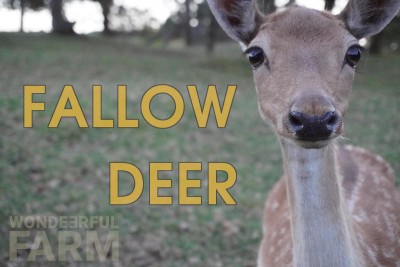
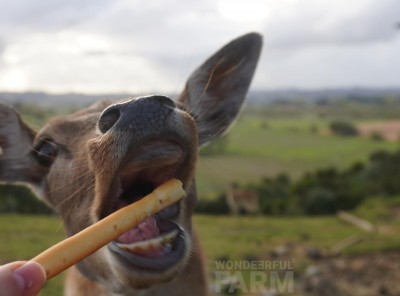

Caleb Shaw 27-06-2020:
Do you remove the antlers of your bucks? Are they dangerous when in the rut?
You commented on my post "Why We Don't Domesticate Deer", and I put a link to this site in an update at the end of that post, as you answer many questions people have about taming deer.
We have a few Fallow Deer in the United States, introduced and in local pockets, but our common deer are White Tailed Deer. White Tailed bucks have far sharper antlers than Fallow bucks, and also White Tailed deer are less social, only grouping to pack down deep snow in "yards" in the winter. This likely makes them harder to "farm". The bucks become very aggressive when in rut, and there are sad stories of people wounded or killed by bucks they raised and felt were "tame". Do you have to be careful with your bucks?
Thanks for your site. I enjoy it a lot.